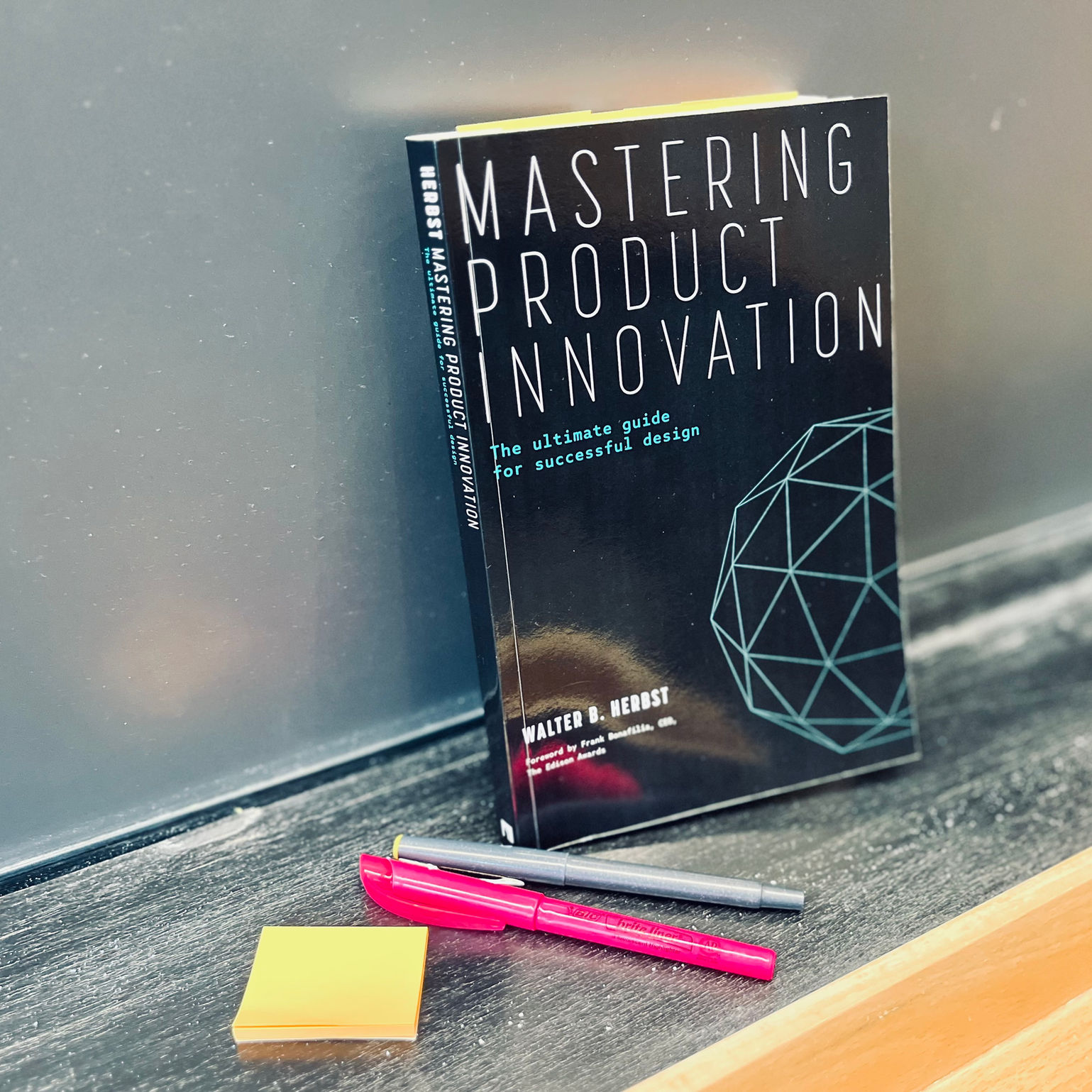top of page


Mastering Product Innovation: The Ultimate Guide for Successful Design
May 19, 2024
While I am occupied with design experiments and interviews during the weekdays, reading books over the weekend satisfies my intellectual needs and passion for design. I enjoyed reading "Mastering Product Innovation: The Ultimate Guide for Successful Design" by Prof. Walter B. Herbst during the chilly and rainy weekend at the MIT.
Herbert Simon, a Nobel Laureate in Economics and computer scientist, stated in 1969 that design is "not only a science but also a way of thinking." This echoes John Dewey’s interpretation of design thinking, where everything that exists—as far as it is known—is an interaction with other entities (P42). The author emphasizes that his comprehension of design is to explore the emotional content of aspirational needs (P53).
Additionally, I appreciate how the author promotes the PDR (Product Document Requirement) concept, which can be integrated into the product design and development process (P56). Drawing from his extensive academic and industry experience, he outlines his structured phase gate activities (P151) to demonstrate how to incorporate PDR effectively using solid case studies. The phase gate methodology spans from phases 0 to 7: planning, discovery research, visioning, concept development, review, preferences research, confirm channel, and design consideration.
This has led me to consider how design can be strategically positioned within an organization to drive transformational change. The three objective-based planning business models introduced by the author provide a source of inspiration and guidance. I am inspired by how he applies and visualizes these ideas through a cascading structure, discussing various layers of influence across the organization and design process. For instance, using OGSMT (Objectives, Goals, Strategy, Measure, and Tactic) can impact both executive and individual levels (P157). Applying V2MOM (Vision, Values, Methods, Obstacles, Measures) influences business and individual levels (P173). Lastly, the benefits of using OKRs (Objectives and Key Results) can span corporate, business, departmental, group, and individual levels (P165).
bottom of page